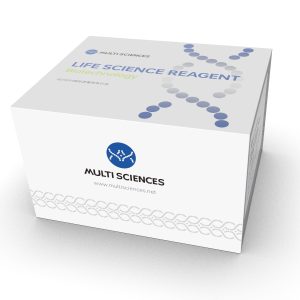HGNC ID: 11920
Target Abstract:
Fas, also known as APO-1, CD95, or TNFRSF6, is a cell surface receptor that transduces apoptosis signals. It is one of two apoptosis pathways, the other being the mitochondrial pathway. Once bound to ligands, Fas forms a death-inducing signaling complex. Membrane-anchored Fas ligand trimers on adjacent cell surfaces lead to Fas hypomerization. Recent studies in mouse models have shown that Fas promotes tumor growth, but the human cancer genomics database suggests that Fas acts as a tumor suppressor. In mouse models of colon cancer induced by AOM-DSS and sarcoma induced by MCA, results showed that Fas was a tumor suppressor. In addition, Fas can also mediate the anti-tumor cytotoxicity of tumor-specific cytotoxic T cells. Studies have reported that serum Fas levels are elevated in patients with cancer and autoimmune diseases, and the former may originate from the tumor cells themselves.
FAS Target Infomation Overview
- Target Symbol: FAS, Fas cell surface death receptor
- Gene Groups: CD molecules; Tumor necrosis factor receptor superfamily; Death inducing signaling complex
- Alias: CD95; APO-1
- Previous Names: FAS1; APT1; TNFRSF6
- Alias Names: TNF receptor superfamily member 6; tumor necrosis factor receptor superfamily, member 6; Fas (TNF receptor superfamily, member 6)
FAS, Fas cell surface death receptor Target Infomation by Species
- Human
- Mouse
- Rat
Human FAS Target Information
- Target Symbol: FAS, Fas cell surface death receptor
- Alias:
- ALPS1A
- APO-1
- apo-1 antigen
- APO-1 cell surface antigen
- apoptosis antigen 1
- apoptosis signaling receptor FAS
- apoptosis-mediating surface antigen FAS
- APT1
- CD95
- CD95 antigen
- Delta Fas/APO-1/CD95
- Fas (TNF receptor superfamily, member 6)
- FAS 827dupA
- Fas AMA
- Fas antigen
- FAS receptor variant 9
- FAS1
- FASLG receptor
- FASTM
- mutant tumor necrosis receptor superfamily member 6
- RP11-399O19.9
- TNF receptor superfamily member 6
- TNFRSF6
- tumor necrosis factor receptor superfamily member 6
- tumor necrosis factor receptor superfamily, member 6
- NCBI_Gene: 355
- UniProtKB: P25445
Human FAS Predicted Functions
Enables calmodulin binding activity; identical protein binding activity; and kinase binding activity. Involved in several processes, including cell surface receptor signaling pathway; positive regulation of cellular protein metabolic process; and regulation of signal transduction. Acts upstream of or within apoptotic process. Located in several cellular components, including cell surface; membrane raft; and nuclear body. Part of CD95 death-inducing signaling complex. Implicated in several diseases, including autoimmune disease (multiple); cystic fibrosis; hematologic cancer (multiple); pre-eclampsia (multiple); and urinary system cancer (multiple). Biomarker of several diseases, including autoimmune disease (multiple); eye disease (multiple); gastrointestinal system cancer (multiple); hematologic cancer (multiple); and neurodegenerative disease (multiple).
Mouse Fas Target Information
- Target Symbol: Fas, Fas (TNF receptor superfamily member 6)
- Alias:
- AI196731
- APO-1
- CD95
- expressed sequence AI196731
- lpr
- lymphoproliferation
- TNF receptor superfamily member 6
- TNFR6
- Tnfrsf6
- NCBI_Gene: 14102
Mouse Fas Predicted Functions
Enables identical protein binding activity. Involved in positive regulation of protein-containing complex assembly. Acts upstream of or within several processes, including extrinsic apoptotic signaling pathway; hematopoietic or lymphoid organ development; and regulation of hemopoiesis. Located in external side of plasma membrane and extracellular region. Part of CD95 death-inducing signaling complex. Is expressed in several structures, including alimentary system; brain; genitourinary system; hemolymphoid system gland; and liver and biliary system. Used to study Sjogren’s syndrome; autoimmune lymphoproliferative syndrome; systemic lupus erythematosus; and type 1 diabetes mellitus. Human ortholog(s) of this gene implicated in several diseases, including autoimmune disease (multiple); cystic fibrosis; hematologic cancer (multiple); pre-eclampsia (multiple); and urinary system cancer (multiple). Orthologous to human FAS (Fas cell surface death receptor).
Rat Fas Target Information
- Target Symbol: Fas, Fas cell surface death receptor
- Alias:
- apo-1 antigen
- apoptosis-mediating surface antigen FAS
- CD95 antigen
- Fas (TNF receptor superfamily, member 6)
- Fas antigen (ATP1)
- Fas receptor
- FASLG receptor
- Tnfrsf6
- tumor necrosis factor receptor superfamily member 6
- Tumor necrosis factor receptor superfamily, member 6
- NCBI_Gene: 246097
Rat Fas Predicted Functions
Enables protease binding activity and tumor necrosis factor-activated receptor activity. Involved in several processes, including cellular response to cytokine stimulus; cellular response to estrogen stimulus; and nervous system development. Located in several cellular components, including apical dendrite; apical plasma membrane; and sarcolemma. Part of CD95 death-inducing signaling complex. Used to study IgA glomerulonephritis; brain glioma; pre-malignant neoplasm; retinal detachment; and transient cerebral ischemia. Biomarker of several diseases, including abdominal obesity-metabolic syndrome 1; artery disease (multiple); brain ischemia (multiple); eye disease (multiple); and liver disease (multiple). Human ortholog(s) of this gene implicated in several diseases, including autoimmune disease (multiple); cystic fibrosis; hematologic cancer (multiple); pre-eclampsia (multiple); and urinary system cancer (multiple). Orthologous to human FAS (Fas cell surface death receptor).

